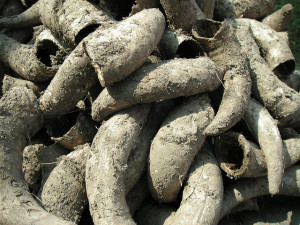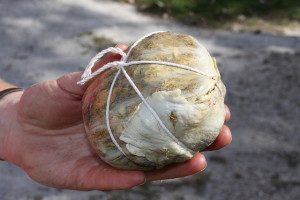Hello readers! I am currently on my maternity leave spending some quality time (and little sleep) with my brand new son! Enjoy this guest post from today’s featured author!
The following is a guest post by Giordana Sobel. Giordana is a wine professional, living and working for a biodynamic winery in southern Tuscany. Originally from New York, she has been living abroad for the past two years, fully immersed in glasses of wine.
Shrouded in mysticism, doubts, and a bad reputation, describing a wine using the “B” word typically leaves a consumer with a skeptically raised eyebrow and a lot of questions about what is involved in the process and why a company would operate this way. So, let’s start from the beginning and try to discover what is it about the “B” word, a.k.a. biodynamics, that leaves people with such a bad taste in their mouth — sometimes quite literally.

Photo courtesy Flickr user Paul Miller
Seemingly overnight, biodynamic wines have become the latest fad in the wine industry. While it appears to be a new trend, it has actually been around since the early 1920s. First proposed by Austrian philosopher and scientist Rudolph Steiner, biodynamic practices were proposed in response to a group of farmers in Germany. These farmers were starting to see their fields, crops and livestock deteriorating in yield and quality after WWI, which had introduced synthetic products for treating the fields, and they wanted to help restore the natural balance of their vineyards. The biodynamic practices that were introduced are based on a philosophy that the world’s ecosystem demands paying attention to the natural order, including phases of the moon and the position of the sun as they affect microorganisms in the soil and plant receptiveness.
So. What is biodynamics?
Biodynamics is an approach to agriculture that focuses on ecological, social and economic sustainability. It uses a series of preparations to treat the soil, leaves, and compost and each preparation has a specific purpose and reason. The preparations are used during different times of the year and, depending on how strict you want to be, during different phases of the moon.
In general, biodynamic farming focuses on making a plant healthy on its own by strengthening its natural defenses and ability to accept nutrients and vitamins. It’s proactive, instead of reactive. It’s like going to the gym when you’re 25 years old and eating healthy instead of taking Lipitor at 50 for the rest of your life once you realize you can’t make it up the stairs anymore and have cholesterol levels off the chart.
With that explanation, why are people still against biodynamics? Ignoring the marketing side of it and focusing on the practice, here’s what I’ve heard so far:
- It’s not scientifically proven or this sounds a lot like magic/voodoo.
– True, but not as much anymore. While it’s hard to quantify if it really makes a difference if plants were watered while the moon was in Venus or not, certain studies have definitely proved that biodynamics have created healthier soils. Studies have shown that biodynamically treated composts had higher temperatures, matured faster, and had higher nitrates than control compost piles inoculated with field soil instead of the preparations according to research at Washington State University by Dr. Lynn Carpenter-Boggs, Dr.

Photo courtesy Flickr user theamaria
John Reganold and Ann C Kennedy. The same researchers found that the soil on Biodynamic farms has higher soil microorganism activity and more diverse soil life. Biodynamic soils have been tested against non-organic soils and they showed greater disease suppression, a decrease in compaction and added organic material. Even growers have said their vines are less stressed, respond to disease better, can uptake minerals more efficiently. PLUS, I like to argue that that no one has proven that biodynamics doesn’t work. Bam!
- You kill animals to get the parts that are required for the preparations. (List of preparations and explanations. I won’t bore you with that here).
– Yes, animal parts are used for the preparations, but if you think about it, does it really even sound biodynamic/organic/sustainable/good practice to be killing animals for their parts…?? Doesn’t it seem much more likely that these animals were killed for their meat (hello, you probably eat hamburgers!) and then the spare parts were given to biodynamic farmers? Just a thought here.
- Biodynamic wines taste like crap…literally.
– Can’t quite argue this one actually. As soon as you hear that a wine is natural/organic/biodynamic, it typically gives an impression of a wine that has aromas of cow manure with notes of sunburnt hay and flavors that come right from the stables themselves. Not exactly a pleasant picture. I will say, however, that this impression is outdated. As biodynamics has become more popular, the technology has improved along with it. Finding ways to apply biodynamics on a large scale and being able to make wines that have fruit, floral and the “good” earthy notes and more importantly, is healthier for you, is becoming less and less rare. I encourage you to keep trying and asking sommeliers for recommendations. They are out there!

7 comments for “Overcoming the Stigma of Biodynamic Wines, Taste, and Practices: A Guest Post by Giordana Sobel”